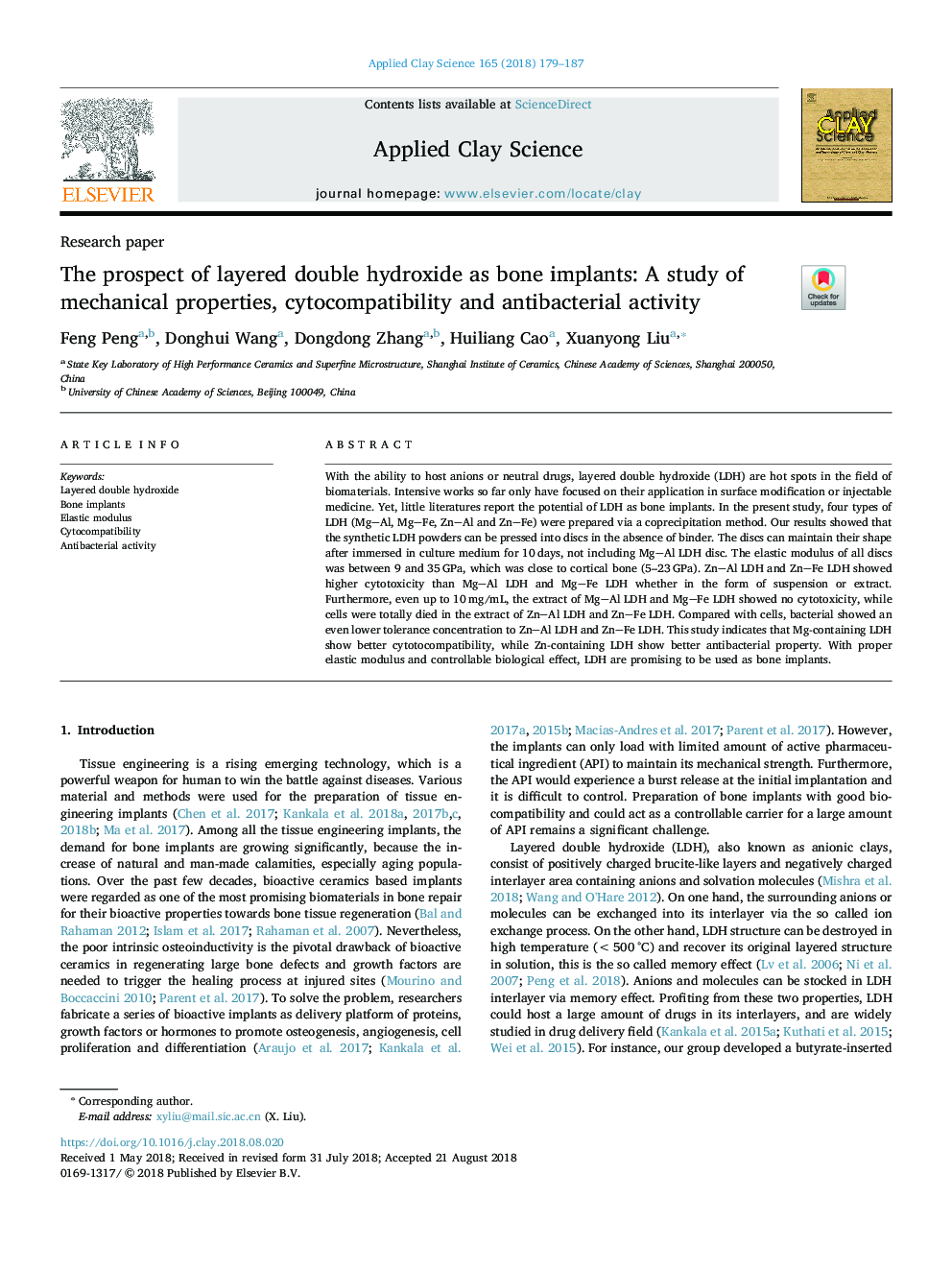| Article ID | Journal | Published Year | Pages | File Type |
|---|---|---|---|---|
| 11007135 | Applied Clay Science | 2018 | 9 Pages |
Abstract
With the ability to host anions or neutral drugs, layered double hydroxide (LDH) are hot spots in the field of biomaterials. Intensive works so far only have focused on their application in surface modification or injectable medicine. Yet, little literatures report the potential of LDH as bone implants. In the present study, four types of LDH (MgAl, MgFe, ZnAl and ZnFe) were prepared via a coprecipitation method. Our results showed that the synthetic LDH powders can be pressed into discs in the absence of binder. The discs can maintain their shape after immersed in culture medium for 10â¯days, not including MgAl LDH disc. The elastic modulus of all discs was between 9 and 35â¯GPa, which was close to cortical bone (5-23â¯GPa). ZnAl LDH and ZnFe LDH showed higher cytotoxicity than MgAl LDH and MgFe LDH whether in the form of suspension or extract. Furthermore, even up to 10â¯mg/mL, the extract of MgAl LDH and MgFe LDH showed no cytotoxicity, while cells were totally died in the extract of ZnAl LDH and ZnFe LDH. Compared with cells, bacterial showed an even lower tolerance concentration to ZnAl LDH and ZnFe LDH. This study indicates that Mg-containing LDH show better cytotocompatibility, while Zn-containing LDH show better antibacterial property. With proper elastic modulus and controllable biological effect, LDH are promising to be used as bone implants.
Keywords
Related Topics
Physical Sciences and Engineering
Earth and Planetary Sciences
Geochemistry and Petrology
Authors
Feng Peng, Donghui Wang, Dongdong Zhang, Huiliang Cao, Xuanyong Liu,
